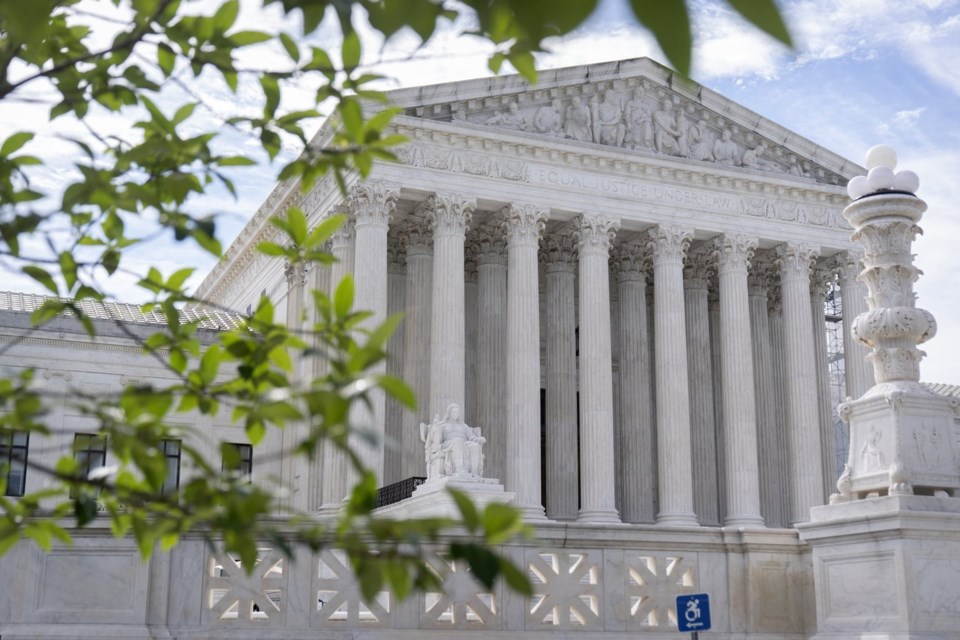WASHINGTON (AP) ŌĆö is putting the Environmental Protection AgencyŌĆÖs air pollution-fighting ŌĆ£good neighborŌĆØ plan on hold while legal challenges continue, the conservative-led courtŌĆÖs latest blow to federal regulations.
The justices in on Thursday rejected arguments by the Biden administration and Democratic-controlled states that the plan was cutting air pollution and saving lives in 11 states where it was being enforced and that the high courtŌĆÖs intervention was unwarranted.
The rule is intended to restrict smokestack emissions from power plants and other industrial sources that burden downwind areas with smog-causing pollution. It will remain on hold while the federal appeals court in Washington considers a challenge to the plan from industry and Republican-led states.
The Supreme Court, with a 6-3 conservative majority, has increasingly reined in the powers of federal agencies, including the EPA, in recent years. The justices have restricted the EPAŌĆÖs authority to fight air and water pollution ŌĆö including that limited the EPAŌĆÖs authority to regulate carbon dioxide emissions from power plants that contribute to global warming. The court also shot down and blocked President Joe BidenŌĆÖs .
The court is currently weighing whether to , which has been the basis for upholding a wide range of regulations on public health, workplace safety and consumer protections.
Three energy-producing states ŌĆö Ohio, Indiana and West Virginia ŌĆö have challenged the air pollution rule, along with the steel industry and other groups, calling it costly and ineffective. They had asked the high court to put it on hold while their challenge makes it way through the courts.
The challengers pointed to decisions in courts around the country that have paused the rule in a dozen states, arguing that those decisions have undermined the EPAŌĆÖs aim of providing a national solution to the problem of ozone pollution because the agency relied on the assumption that all 23 states targeted by the rule would participate.
The issue came to the court on an emergency basis, which almost always results in an order from the court without arguments before the justices.
But not this time. The court heard arguments in late February, when a majority of the court seemed skeptical of arguments from the administration and New York, representing Democratic states, that the ŌĆ£good neighborŌĆØ rule was important to protect downwind states that receive unwanted air pollution from other states.
The EPA has said power plant emissions dropped by 18% last year in the 10 states where it has been allowed to enforce its rule, which was . Those states are Illinois, Indiana, Maryland, Michigan, New Jersey, New York, Ohio, Pennsylvania, Virginia and Wisconsin. In California, limits on emissions from industrial sources other than power plants are supposed to take effect in 2026.
The rule is on hold in another dozen states because of separate legal challenges. Those states are Alabama, Arkansas, Kentucky, Louisiana, Minnesota, Mississippi, Missouri, Nevada, Oklahoma, Texas, Utah and West Virginia.
States that contribute to ground-level ozone, or smog, are required to submit plans ensuring that coal-fired power plants and other industrial sites donŌĆÖt add significantly to air pollution in other states. In cases in which a state has not submitted a ŌĆ£good neighborŌĆØ plan ŌĆö or in which the EPA disapproves a state plan ŌĆö the federal plan was supposed to ensure that downwind states are protected.
Ground-level ozone, which forms when industrial pollutants chemically react in the presence of sunlight, can cause respiratory problems, including asthma and chronic bronchitis. People with compromised immune systems, the elderly and children playing outdoors are particularly vulnerable.
Mark Sherman, The Associated Press



